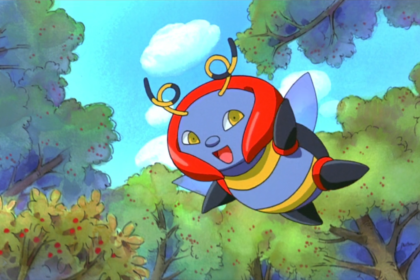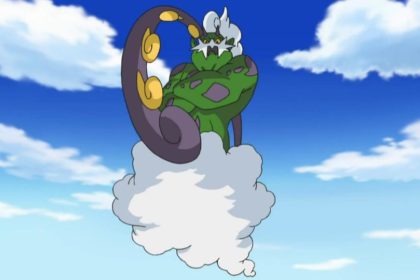Marco Polo was an Italian merchant, explorer, and writer, born in the Republic of Venice. His travels are recorded in Livres des merveilles du monde, a book that described to Europeans the wealth and great size of China, its capital Peking and other Asian cities and countries. Take a look below for 30 more fascinating and interesting facts about Marco Polo.
1. Polo learned the mercantile trade from his father and his uncle, Niccolo and Maffeo, who traveled through Asia and met Kublai Khan.
2. In 1269, they returned to Venice to meet Marco for the first time. The three of them embarked on an epic journey to Asia, returning after 24 years to find Venice at war with Genoa. Marco was imprisoned and dictated his stories to a cellmate.
3. He was released in 1299, became a wealthy merchant, married, and had three children.
4. Polo died in 1324 and was buried in the church of San Lorenzo in Venice.
5. Though he wasn’t the first European to reach China, Marco Polo was the first to leave a detailed chronicle of his experience.

6. His book inspired Christopher Columbus and many other travelers. Polo also influenced European cartography, leading to the introduction of the Fra Mauro map.
7. When Marco Polo left on his Asian trip to the court of Kublai Khan with his father and uncle, he was only 17 years old. The trip was most likely the first time that he journeyed away from home.
8. In 1298, three years after his return, Polo was made a gentleman commander of a Venetian ship.
9. While in prison, Polo met Rustichello of Pisa. Rustichello was a famous romance writer, and Polo told his life story to Rustichello so he could write it. When the two were released in 1299, Polo’s name making book was complete.
10. Historians generally agree that Polo was born sometime around the year 1254, but they’re not sure of the exact date and location. The popular belief is that he was born in Venice, though some scholars argue that he could have been born on the island of Korcula, in what’s now Croatia. According to the theory, Polo’s father wasn’t actually from Italy, and he changed his name from Pilic to Polo when he settled in Venice.
11. Polo’s mother died around 1260 when he was still a child. However, very little is known about his childhood as he was mostly raised by his aunt and uncle.
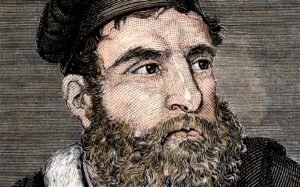
12. The Polos originally planned to stay in Asia for just a few years, but ended up staying much longer. Marco Polo was gone from Venice for 24 years.
13. The journey to Asia wasn’t easy and Polo had many challenges. While in what is now Afghanistan, he got sick and was forced to take refuge in the mountains while he recovered. He also reported the difficulty of crossing the Gobi desert, writing that it took a month to cross it at its narrowest point.
14. For years, historians argued whether or not Polo did make it to China. There’s no actual proof beyond his book that he made it that far, but the amount of detailed knowledge that Polo outlines in the book suggests that he almost certainly did.
15. One of the more popular legends about Polo’s travels state that he brought pasta to Venice from China. That isn’t true as pasta has been part of Italian cuisine since before Polo’s birth. He did, however, bring the idea of paper money to Europe.
16. By trade, the Polos were merchants who sold rare items like silk, jewels, and spice, but their travels weren’t simply trading missions. Kublai Kahn first commissioned the trio to be emissaries, and Marco was later sent to China and Southeast Asia as a tax collector and as Kahn’s special messenger.
17. The young Marco Polo immersed himself in Eastern culture, customs and language. He demonstrated a curiosity for his surroundings, and claimed to have learned four languages. Historians have speculate that these languages were probably Mongolian, Persian, Arabic and Turkish.
18. Several hundred years after his death, a species of sheep was named after Marco Polo. In his book, Polo mentions observing a mountain sheep in what’s now northeastern Afghanistan, and in 1841, zoologist Edward Blyth referred to a sheep called Ovis ammon polii.
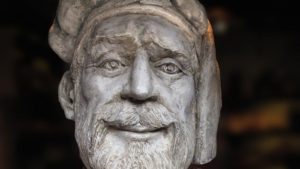
19. Throughout his travels, Polo encountered many unusual animals that he often mistook for mythical creatures. He described crocodiles as huge “serpents” that could “swallow a man at one time,” and he thought that horned beasts such as the Asian rhino were unicorns.
20. Around 1292, the Polo volunteered to escort a Mongol princess to Persia, and aimed to head to Europe after. They wanted to leave as Kublai Khan was in his 80s, and they feared that a regime change upon his death would also mean the death of all foreigners.
21. When the Polos left the Khan, they set out by sea with a group of 700 passengers and sailors to Persia. All but 18 of the original passengers died from disease or from storms.
22. When the Polos returned to Venice, after being gone for over two decades, the people in their hometown didn’t recognize them, and the travelers found speaking in their native tongue, Italian, difficult.
23. In addition to introducing paper money to the Western world, Polo also described several other Chinese innovations to the West. He brought coal, eyeglasses, and a variety of rare species to Europe’s attention.
24. Polo never planned for his book to be read as a memoir. He wanted it to be a description of the places that he and his family visited and what they saw there. Because of this, few personal details about his life are included.
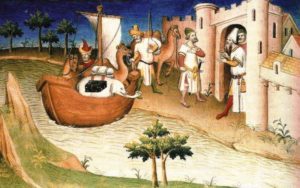
25. Christopher Columbus carried a copy of Polo’s book with him on his voyages, and had even planned to follow Polo’s route and make contact with the Kublai Khan’s successor.
26. At one point, Kublai Khan asked Marco’s father and uncle to petition the Pope to send 100 priests to Beijing. The Pope denied the request but his father and uncle took back Marco with them.
27. Kublai Khan made Niccolo and Maffeo part of his court and liked Marco so much that he eventually made him governor of a Chinese city, a tax inspector and gave him a seat on his Privy Council.
28. Kublai Khan’s summer palace was called Xanadu. Marco Polo called Xanadu, “the greatest palace that ever was.”
29. In 1851, a three masted Clipper built in Saint John, New Brunswick took Marco Polo’s name. It was the first shop to sail around the world in under six months.
30. The frequent flyer program of Hong Kong flag carrier Cathay Pacific is known as the Marco Polo Club.



